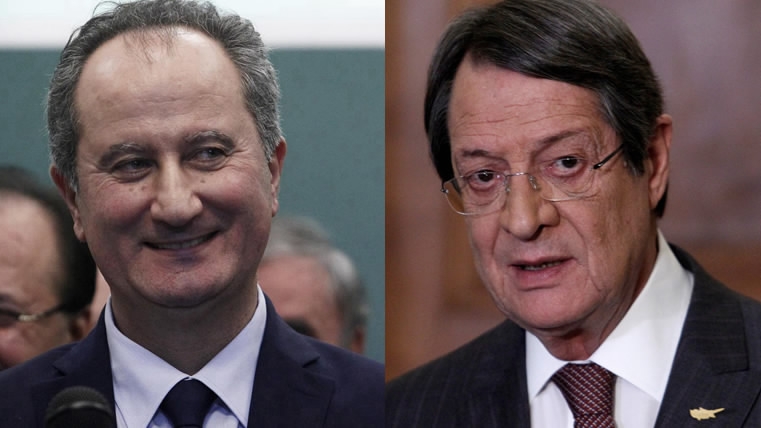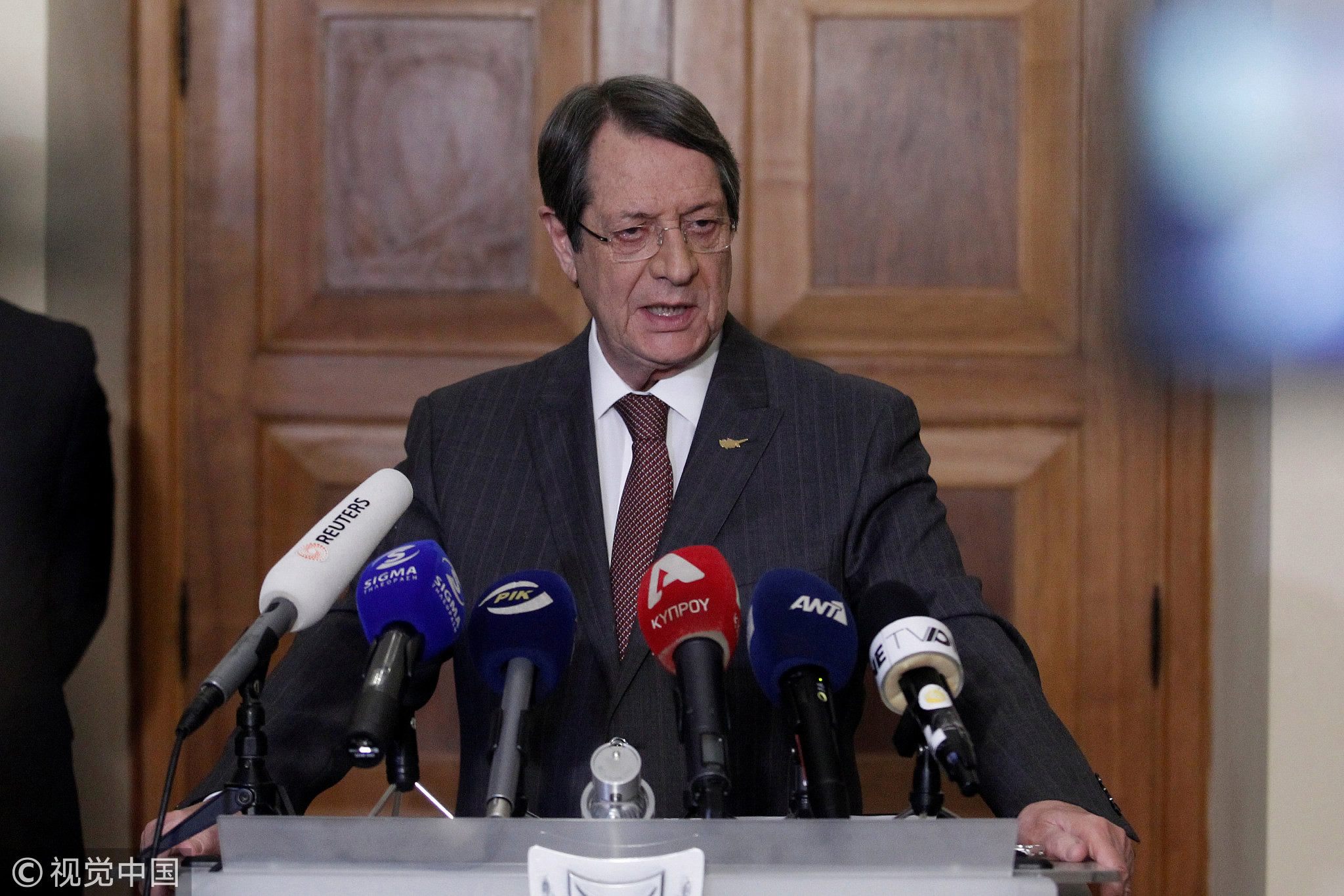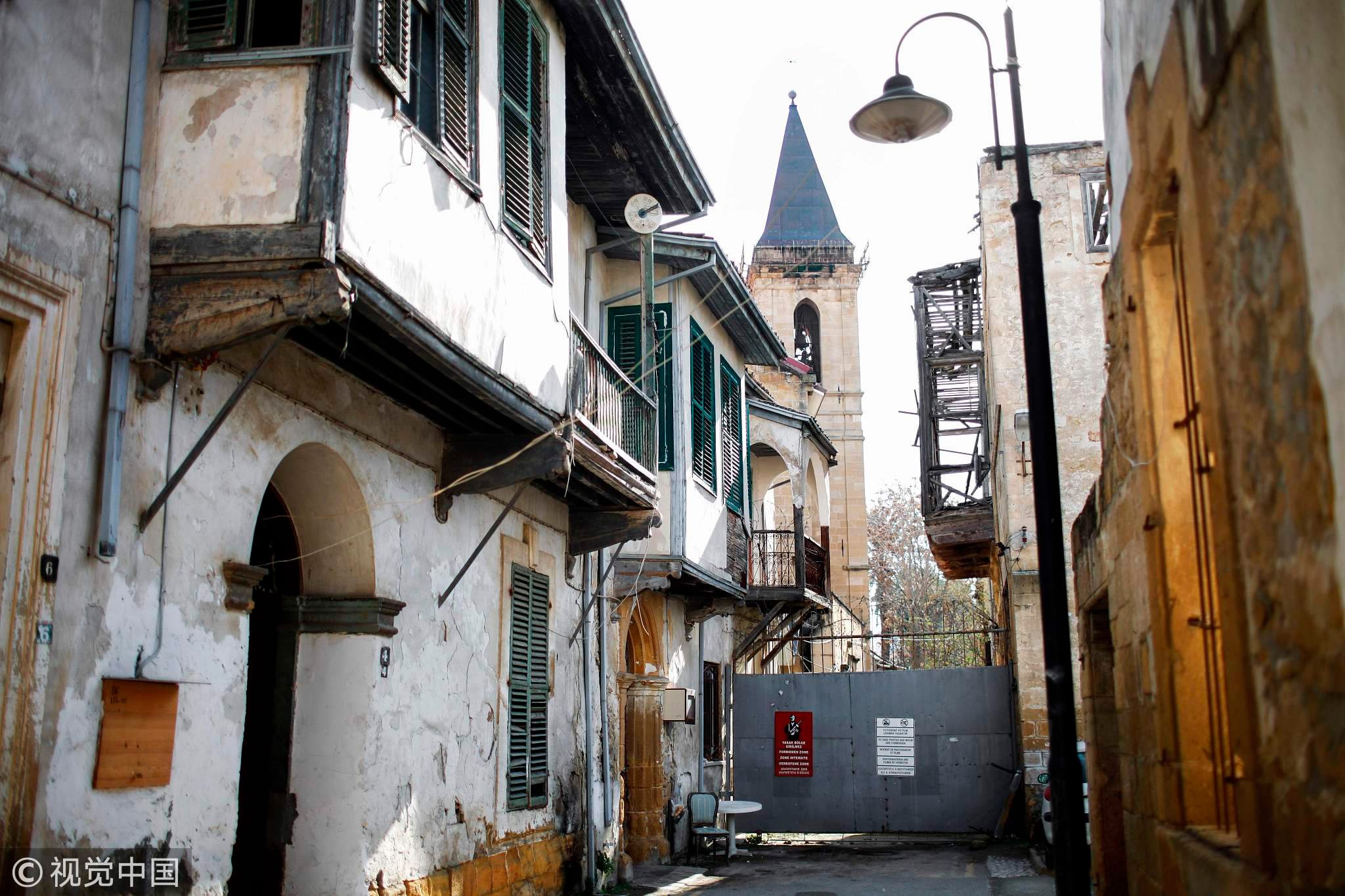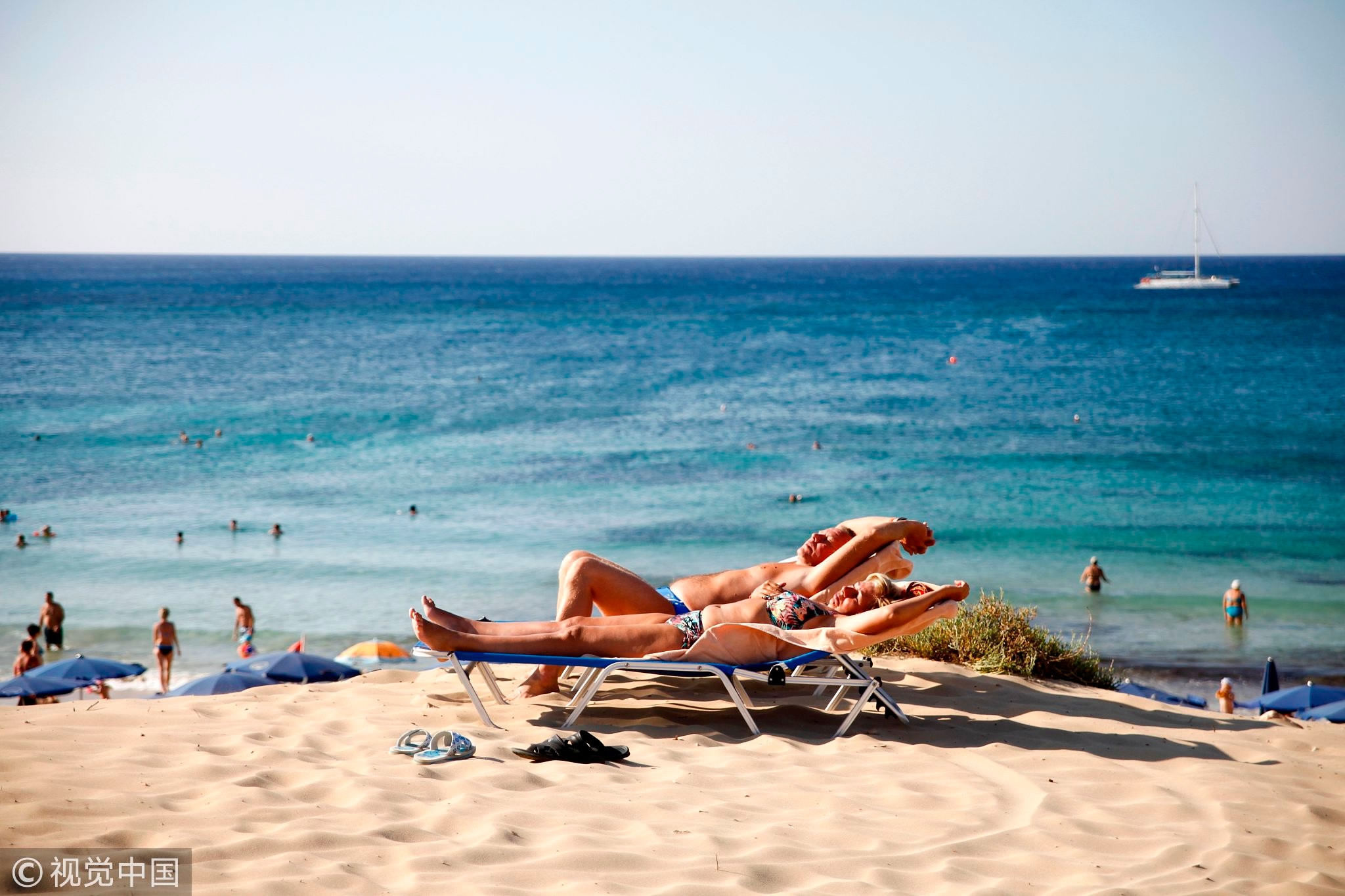
Politics
14:33, 04-Feb-2018
Cyprus votes in close presidential run-off
CGTN

Cyprus votes Sunday in a tight presidential run-off, with incumbent Nicos Anastasiades and his leftist challenger sparring over who is best placed to reunify the island and boost a fragile economic recovery.
In a first round on January 28, conservative Anastasiades garnered 35.5 percent of the ballots, while communist-backed opponent Stavros Malas picked up 30 percent.
The head-to-head showdown Sunday is a rerun of the 2013 vote that saw Anastasiades cruise into office in the European Union's most easterly member.
But, with last week's losing candidates refusing to back either hopeful, this time around it looks set to be closer as the former lawyer seeks a second and final five-year term.

Incumbent Nicos Anastasiades, presidential candidate of the right-wing Democratic Rally party, addresses journalists following the results of the first round of the presidential election at the Presidential Palace in Nicosia, Jan. 28, 2018. /VCG Photo
Incumbent Nicos Anastasiades, presidential candidate of the right-wing Democratic Rally party, addresses journalists following the results of the first round of the presidential election at the Presidential Palace in Nicosia, Jan. 28, 2018. /VCG Photo
Anastasiades, 71, has pledged fresh talks with Turkish Cypriot leader Mustafa Akinci despite the acrimonious collapse last July of UN-backed negotiations that comes closer than ever to sealing a deal.
Dovish former health minister Malas, 50, has slammed his opponent for not doing enough to reach an agreement.
The first-round success of the candidates seen as most keen on a deal has sparked hope that progress can be made.
But there remain major obstacles, including over the future of some 40,000 Turkish troops in the north, and deep skepticism that Nicosia or a nationalist government in Ankara are willing to compromise.
Fast facts about Cyprus
1. Divided island

The northern part of Nicosia's old city, in the self-proclaimed Turkish Republic of Northern Cyprus (TRNC), shows a gate leading to the UN buffer zone separating the divided Nicosia, Jan. 17, 2017. /VCG Photo
The northern part of Nicosia's old city, in the self-proclaimed Turkish Republic of Northern Cyprus (TRNC), shows a gate leading to the UN buffer zone separating the divided Nicosia, Jan. 17, 2017. /VCG Photo
Cyprus has been divided since 1974, when Turkish troops invaded and occupied the northern third of the island. Ankara's intervention followed a decade of intercommunal tension and violence between the Greek majority and the Turkish minority and the deployment of UN peacekeepers.
Almost 44 years later, Cyprus remains cut in two and a barrier of barbed wire and military posts leaves the capital Nicosia as the world's last divided city.
2. British bases
Cyprus is home to the two British Sovereign Base Areas of Akrotiri and Dhekelia that house key military and air force installations.
The bases have served as intelligence-gathering hubs and a launch pad for British air operations as part of a US-led coalition fighting ISIL in Syria and Iraq.
3. Holiday destination

Tourists sunbathe at the beach in the resort town of Ayia Napa in southeastern Cyprus, Sept. 7, 2017. /VCG Photo
Tourists sunbathe at the beach in the resort town of Ayia Napa in southeastern Cyprus, Sept. 7, 2017. /VCG Photo
With sandy beaches and clear waters, prized as the cleanest in the EU, Cyprus has long been a tourist destination.
In 2017, Cyprus smashed records as an estimated 3.5 million tourists flocked to the island. Britain makes up the biggest market, followed by Russia, Israel and Germany.
4. Economic crisis
The flow of tourists has helped Cyprus recover from a 2013 financial crisis when it was forced to take a 10-billion-euro (12.5 billion US dollars) bailout package to save its crumbling economy and banks.
Cyprus says it has cleaned up its banking system and tightened controls over a sector that was long seen as a haven for cash from Eastern Europe.
Source(s): AFP

SITEMAP
Copyright © 2018 CGTN. Beijing ICP prepared NO.16065310-3
Copyright © 2018 CGTN. Beijing ICP prepared NO.16065310-3